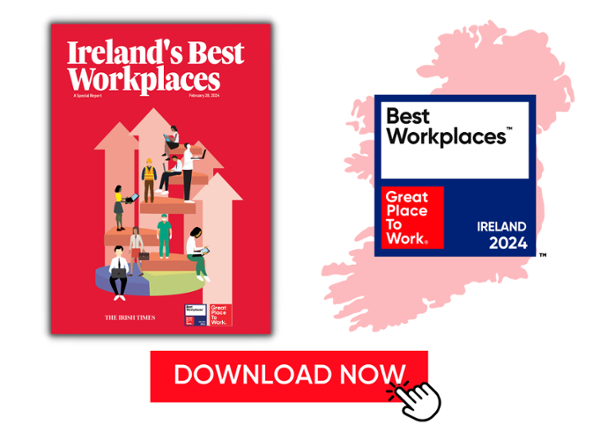Many HR leaders have listened to their employees and know that mixed feelings about coming back to the office exist. The bigger challenge for some of these leaders is a lack of support from the top. It’s a tough spot to be in, but Great Place to Work® has some advice for leaders dealing with this situation:
You have to get under the hood and understand why. Both CEOs and employees are juggling a new reality and changing expectations of the future of work. Is your CEO concerned about the financial implications of employees being out of the office, such as holding leases for unused office space? Is there a sense that innovation is suffering? Is there concern that the distinct culture you’ve created is at risk?
Encouraging leaders, especially the CEO, to share their perspectives and concerns, is a strong step toward building trust in the process of listening and creating a path forward. Next, HR leaders have to validate their feelings and find out what’s on their employees minds. Listen to employee perspectives using various channels, including focused employee surveys, manager conversations, and all-hands meetings. Be prepared to have your assumptions challenged by the reasons and feelings employees have about returning to the office.
The "new normal"
Once your CEO has committed to a return-to-office strategy, make sure these are part of your approach:
1. Communicate often about plans to return to the office
Prepare people for the new work arrangement with regular communications and recognise that many people are still experiencing uncertainty and will need to adjust.
2. Give specific time frames
Make sure people are clear when the return to office process kicks off. Giving timeframes will also alleviate some of your employees’ mental load attached to uncertainty.
3. Consider how productivity can be different person to person
What people want in returning to the office or staying home depends on an individual's job responsibilities as well as their style and personality. Some employees thrive in a convivial office space, while others do their best work in the serenity of their home.
Working on a synchronous schedule can improve coordination, but it can also introduce constant communications and interruptions that disrupt focus. Managers need to think about asynchronous schedules in addition to where people work.

4. Innovate with all
Some might be quick to put the onus squarely on the manager to make the decisions, but we think this is an opportunity to practice innovation and collaboration. As a manager, give people options and guidelines to decide what works best for them.
5. Reflect on fairness and inclusivity
Fairness should always be top of mind, and during this transition, there is a good chance concerns about favoritism will arise and that people may be left out or treated unfairly.
With promotions more often handed to those in close proximity, how does this fare for people on remote schedules? Think about your process for promotions and other areas that could hinder an equitable hybrid workplace.
6. Commit to ongoing evaluation and assessment
Ask employees at least quarterly about their experience so the business can respond quickly to support their ever-evolving needs. For a clear and nuanced insight, employee pulse surveys get to the crux of the issue and invite honest feedback.
How to support your employees in a return to the office
No matter what your return to the office looks like, supporting and engaging with your employees along the way is key. Making sure people feel they have choices to fit their needs is key to retaining top talent.
You must continue to ask:
- Do employees feel supported by their colleagues as they return to work?
- Do employees feel their workplace also supports their responsibilities at home?
- Do employees trust their leaders’ decisions?
- Do employees feel like they have a say in how they work?

About Great Place to Work®
Great Place to Work® is the global authority on workplace culture. We help organisations quantify their culture and produce better business results by creating a high-trust work experience for all employees. We recognise Great Place to Work-Certified™ companies and the Best Workplaces™ in more than 60 countries. To join the thousands of companies that have committed to building high-trust company cultures that help them attract, retain and take care of their people, contact us about getting Certified today.
